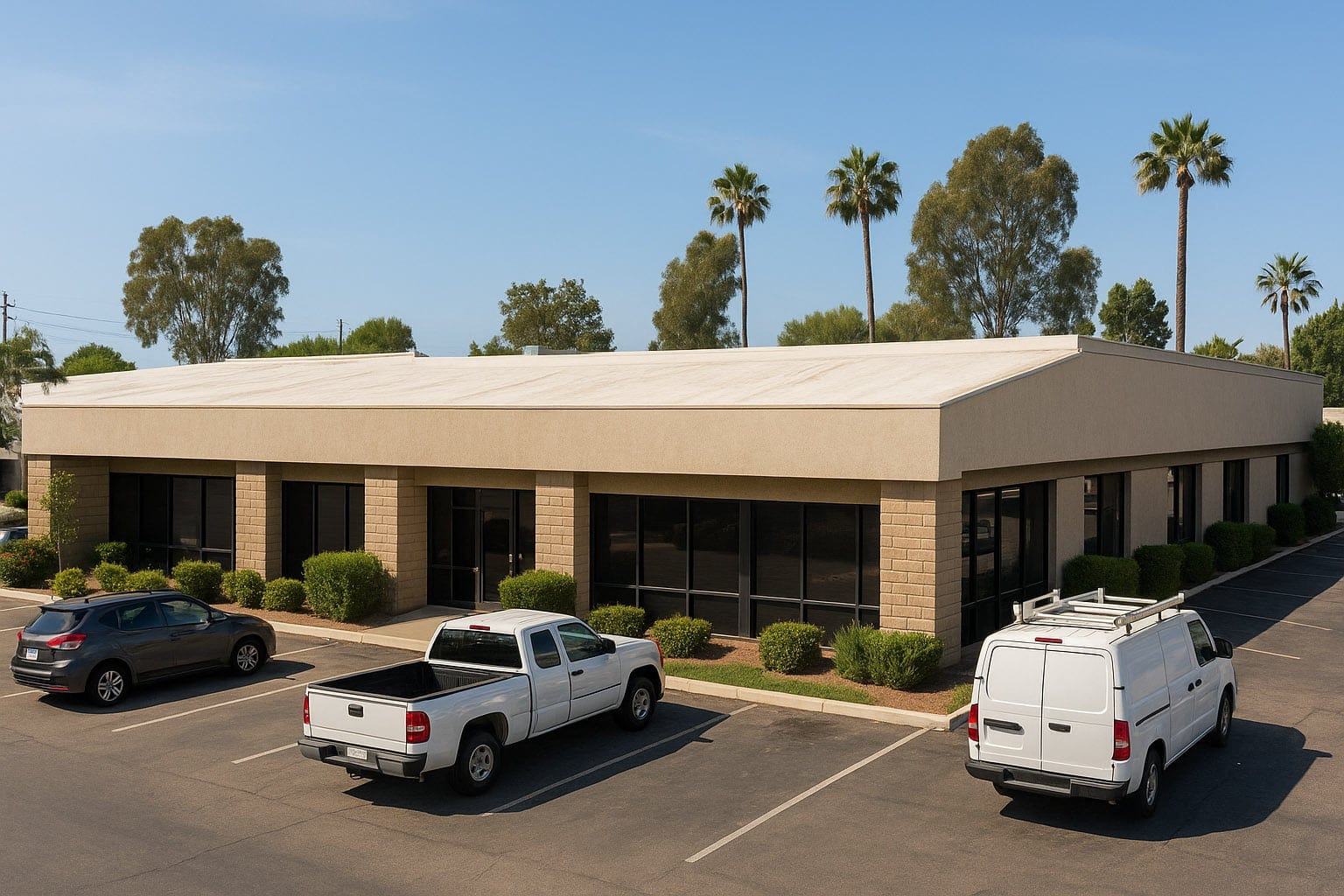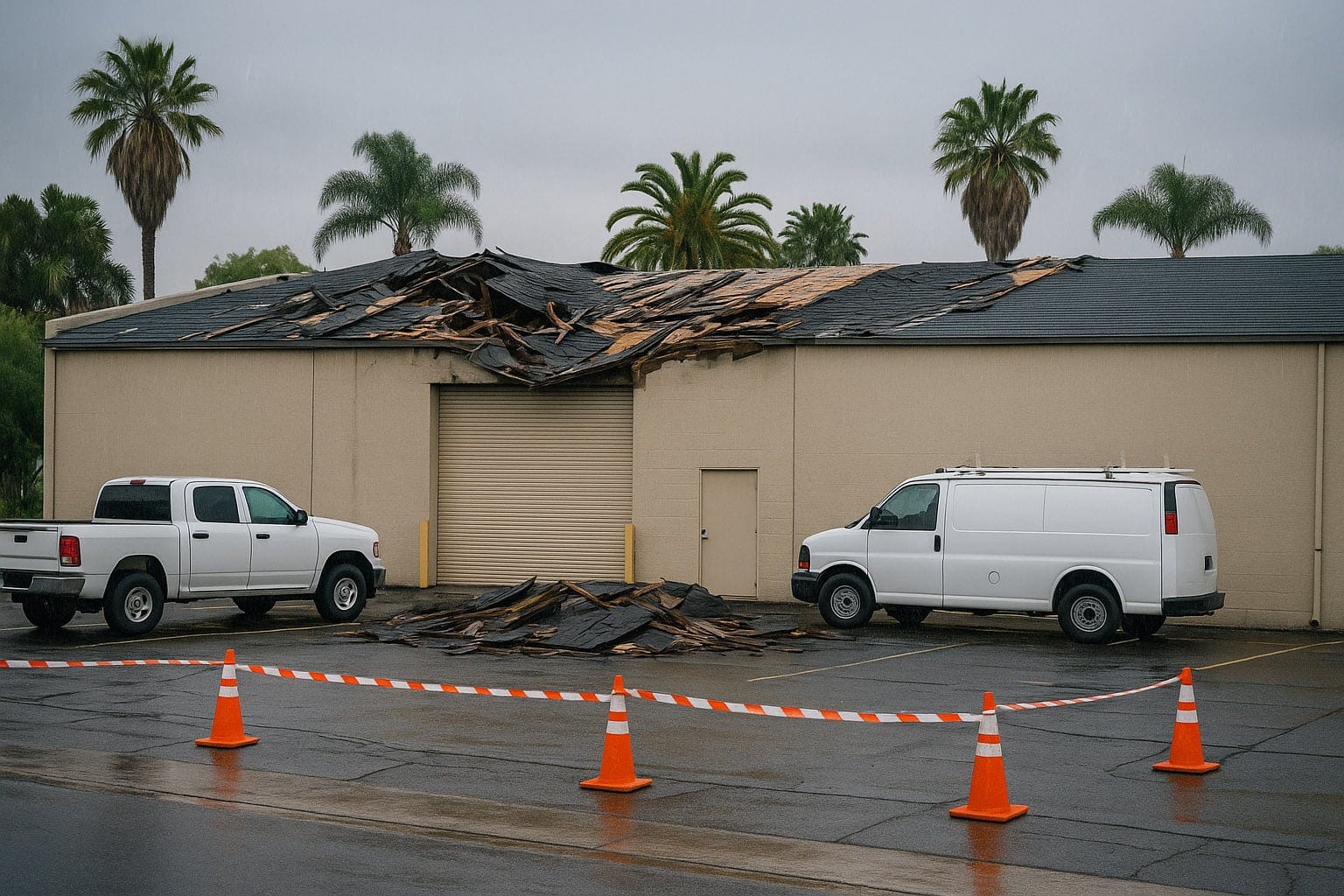For any commercial property owner in Los Angeles, the roof is one of the most significant and expensive assets. It protects your inventory, your operations, and your tenants. Yet, it’s often the most neglected until a crisis strikes. A sudden leak during a winter storm or a critical failure during a summer heatwave can halt business and lead to staggering repair costs. The key to managing this asset isn’t just reacting to problems, it’s preventing them through strategically timed inspections. Let’s dive into the specifics.
Summary
- Twice a Year is Key: The best practice for Los Angeles commercial roofing is to schedule professional inspections twice a year—once in the spring after the rainy season and once in the fall before winter.
- Post-Storm Checks are Crucial: Always schedule an inspection after a major storm, even if there is no visible damage. High winds and heavy rain can cause hidden issues that lead to major problems later.
- Before Summer Heat: An inspection before summer is vital to identify vulnerabilities like cracked seals or membrane damage that can be worsened by intense UV exposure and thermal stress.
- Proactive, Not Reactive: Regular inspections are a cost-effective strategy. They identify minor issues before they become expensive emergencies, extend the lifespan of your roof, and maintain your property’s value.
- Key Triggers for Inspection: Besides routine checks, schedule an inspection after any significant weather event, before or after a tenant change, after rooftop work, or if you notice any interior signs of water damage.
For business owners and property managers, the roof over their heads is a critical asset that protects everything underneath. In a city like Los Angeles, where the climate ranges from intense summer sun to occasional heavy rains, a proactive approach to roof maintenance is not just recommended, it’s essential. But when is the right time to schedule a professional inspection for your Los Angeles commercial roofing?
The answer isn’t a single date on the calendar. Instead, it’s a strategic schedule based on seasons, weather events, and your building’s lifecycle. At LA Roofing Materials, we believe that a well-timed inspection is the most powerful tool for preventing costly damage and extending the life of your roof.
The Bi-Annual Standard: Your Proactive Baseline
The most widely accepted best practice is to have your commercial roof professionally inspected twice a year. This schedule allows a qualified inspector to catch developing issues at the turn of the most demanding seasons.
1. Spring Inspection (After the Rainy Season)
The mild, wet winters in LA can take a toll. Once the rainy season is over (typically around March or April), it’s the perfect time for an inspection. An inspector will look for:
- Ponding Water: Areas where water has failed to drain properly.
- Damaged Flashing: Compromised seals around vents, HVAC units, and roof edges.
- Clogged Drains and Gutters: Debris buildup that can lead to water backup.
- Membrane Damage: Punctures, blisters, or open seams caused by winter weather.
Addressing these issues in the spring prevents minor leaks from becoming major problems during the next rainy season.
2. Fall Inspection (Before the Rainy Season)
The long, hot, and dry LA summer can be brutal on a roof. Intense UV radiation and thermal shock can cause materials to crack, shrink, and degrade. A fall inspection (around September or October) is crucial to prepare your roof for the coming winter. An inspector will check for:
- Sun Damage: Cracks, blisters, or chalking on the roof’s surface.
- Brittle Seals: Caulking and sealants that have dried out and pulled away.
- Debris Accumulation: Leaves and dirt that can clog drainage systems.
This pre-winter checkup ensures your roof is watertight and ready for whatever the season brings.
Event-Based Inspections: When to Call an Expert Immediately
Beyond your routine schedule, certain events should always trigger an immediate call to a commercial roofing contractor in Los Angeles.
- After a Major Storm: High winds, heavy downpours, or hail can cause immediate and often hidden damage. Don’t wait for a leak to appear; get a professional assessment right away.
- After Rooftop Work: If you’ve had HVAC units serviced, solar panels installed, or any other work done on your roof, an inspection is wise. Dropped tools or heavy foot traffic can easily puncture a roof membrane.
- Before or After a Tenant Change: If you lease your commercial property, inspecting the roof before a new tenant moves in and after an old one leaves is a smart practice to document its condition and address any issues.
- If You Notice Interior Damage: Stains on the ceiling, drips, or peeling paint are clear signs of a water intrusion problem. An immediate inspection is needed to locate the source before structural damage occurs.
Why Proactive Inspections Save You Money
Waiting for a leak to call a Los Angeles commercial roofing company is a reactive and expensive strategy. Regular, proactive inspections are a small investment that pays huge dividends by:
- Preventing Major Repairs: Catching a small crack or open seam early costs a fraction of what it takes to repair extensive water damage and replace saturated insulation.
- Extending Roof Lifespan: Proper maintenance can significantly extend the service life of your roofing system, pushing a full replacement further down the road.
- Protecting Your Assets: A sound roof protects the structure of your building and the valuable equipment, inventory, and operations inside.
- Maintaining Property Value: A well-maintained roof with a documented inspection history is a significant asset when selling or leasing a property.
Partner with the Right Professionals
The effectiveness of an inspection depends on the expertise of the person performing it. It’s crucial to work with a reputable commercial roofing contractor in Los Angeles who understands the specific challenges of our climate and the nuances of different roofing systems.
At LA Roofing Materials, we supply the highest quality roofing supplies in Los Angeles and work with a network of the best contractors in the business. We can help you find a trusted professional to create a maintenance and inspection plan that protects your investment for years to come.
Don’t wait for a problem to look up. Contact LA Roofing Materials today to get connected with an expert who can assess your roof and set up a proactive inspection schedule.
Frequently Asked Questions (FAQs)
1. How often should a commercial flat roof in Los Angeles be inspected?
The industry standard is to have your commercial roof professionally inspected at least twice a year: once in the spring after the rainy season, and once in the fall before the next one begins.
2. What do inspectors look for during a commercial roof inspection?
Inspectors look for signs of damage like ponding water, clogged drains, cracked or blistering membranes, damaged flashing around rooftop units, and open seams or failed sealants.
3. Can I inspect the roof myself to save money?
While a visual check from the ground is fine, a professional inspection is crucial. A trained commercial roofing contractor can identify subtle signs of damage and potential failure points that an untrained eye would miss, saving you significant money in the long run.
4. How much does a commercial roof inspection typically cost in LA?
The cost can vary depending on the size, accessibility, and complexity of your roof. However, the cost of a routine inspection is minimal compared to the thousands of dollars you could spend on emergency Los Angeles roofing repairs.
5. Does a roof inspection extend my roof’s warranty?
While an inspection itself doesn’t extend the warranty, many manufacturer warranties require documented proof of regular professional maintenance and inspections. Neglecting them can actually void your warranty coverage.


